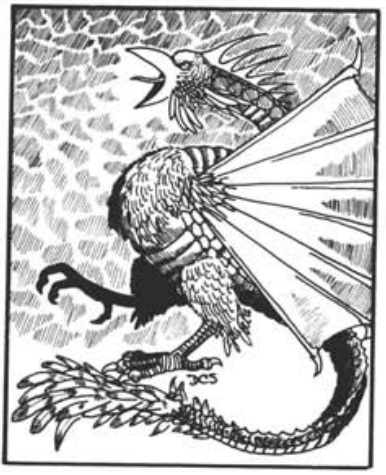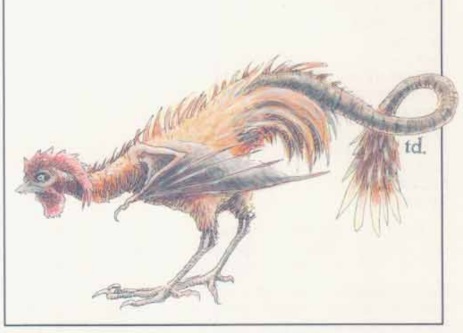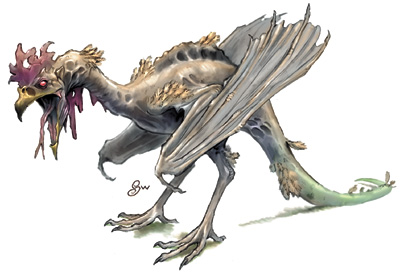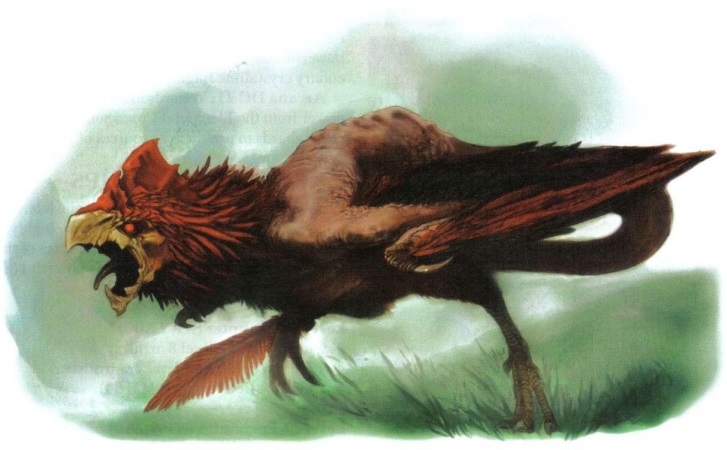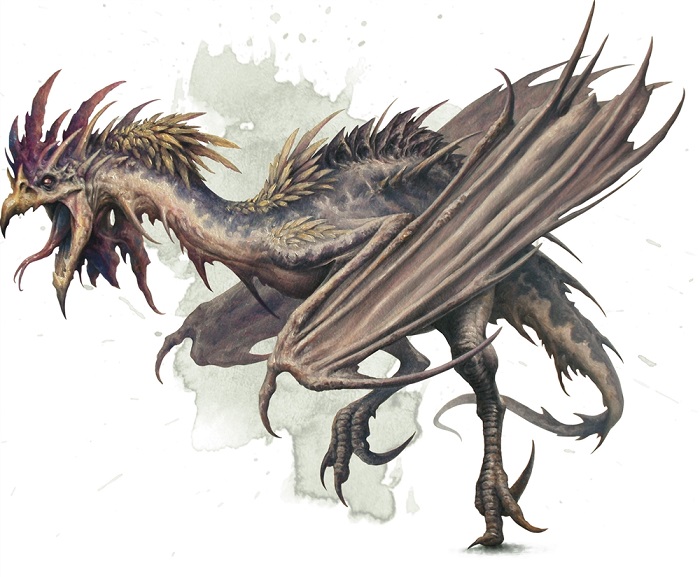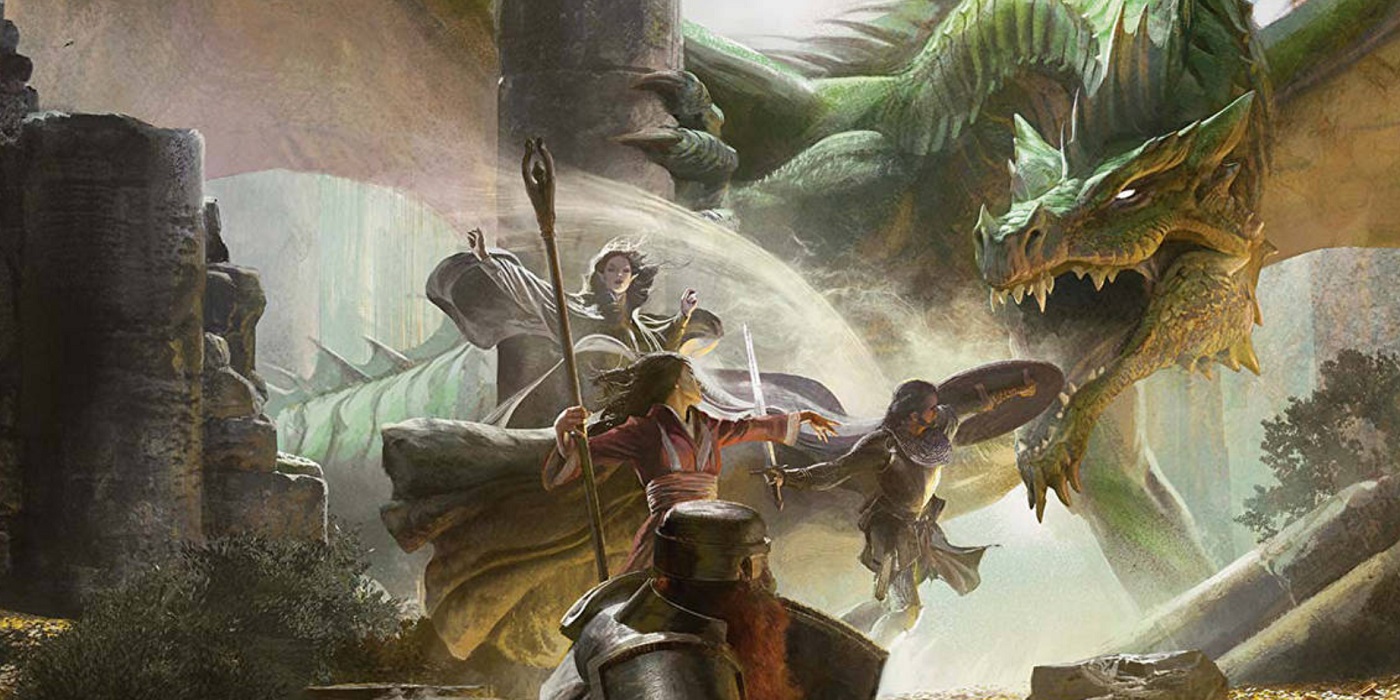D&D Monster Spotlight: Rockatrice the Cockatrice
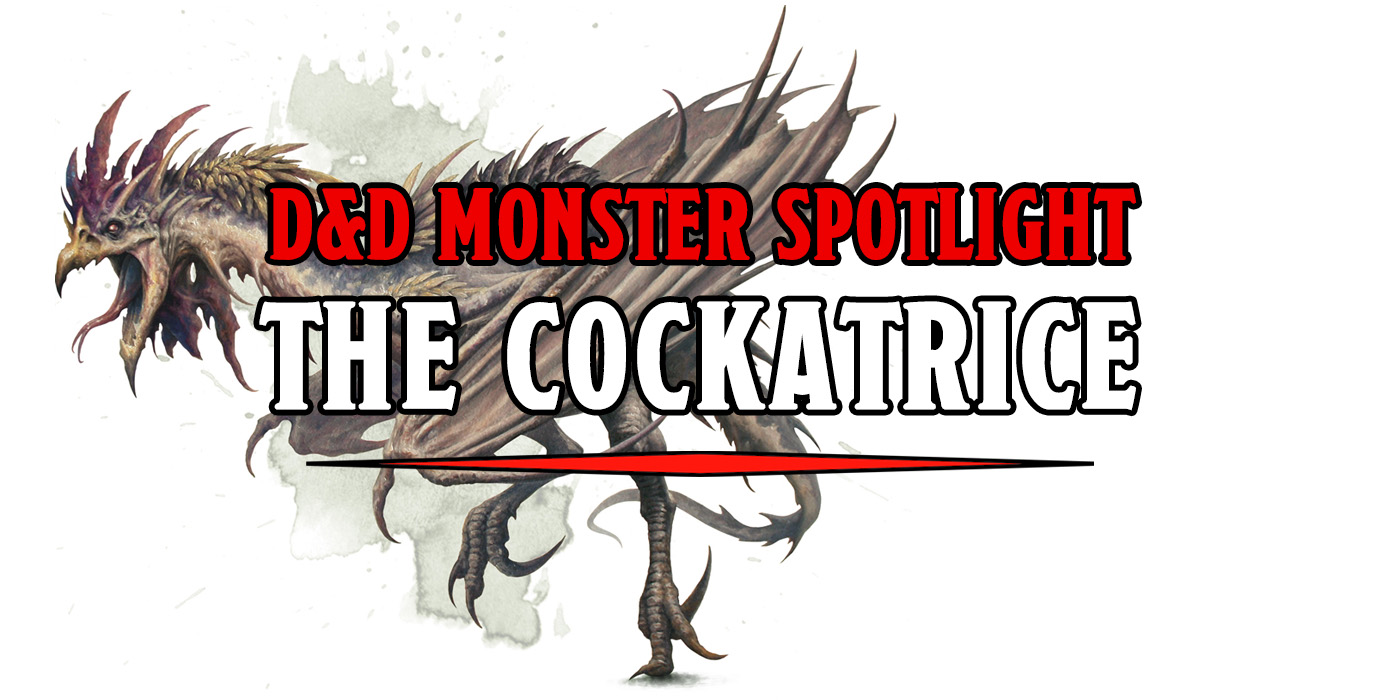
We know about the stony basilisk. Let’s take a look at their Parent-Trap style long-lost twin, the Cockatrice.
The Cockatrice in our real-world mythology is a bipedal dragon or serpent with a rooster’s head and the ability to kill its enemies by looking at them. Opposite the Basilisk, they are hatched when a chicken’s egg is incubated by a toad or a snake. They raise a lot of nature vs nurture questions for cryptozoologists everywhere.
In Dungeons and Dragons, the Cockatrice is similar in capabilities and danger level to its reptilian cousin with very unique differences in aesthetic and power.
First Edition
The Cockatrice can inflict minimal damage with their beaks, but have the ability to turn their enemies to stone by touching them. This petrification ability can effect creatures on the astral and ethereal plans as well. Basic but scary and something I’d prefer to avoid. This early on their sort of beautiful in their simplicity. In a “no thanks” sort of way.
Second Edition
2E really separates the Cockatrice from its lazy sibling by describing how fiercely they will attack anything that could be deemed a threat. A favorite move is flying right into a foe’s face in an effort to overwhelm and confuse it. It is also explained that the Cockatrice is at least somewhat aware of their own abilities and shortcomings.
For example, they know that they should touch their victim’s exposed flesh as opposed to clothed or armored areas. Second edition also introduces that Pyrolisk, an almost identical relative of the Cockatrice that can make its enemy burst into flame and seems to thrive on creating mayhem.
Third Edition
Three and three point five bring nothing new to the Cockatrice in terms of power or flavor text. There is a one-sentence note of how their feathers are prized as quills. But that feels more like commentary on human nature than the creature itself. And honestly, I’m not sure if 3E had to add anything to the Cockatrice, they’re ugly, they attack alone or in flocks, and they turn you to stone. They’re a classic; why mess with perfection?
Fourth Edition
4E Cockatrices have more technical capabilities with a Bite worth 1d6+3 damage and Buffeting Wings, allowing it to attack and retreat quickly, in addition to its petrifying touch. But the creature’s description is also shifted from viciously going directly for its victim’s face to “a cowardly foe.” I don’t know about you, but I’ve been chased by a wild turkey (about the same size and terror level as a cockatrice, I think) and it feels sort of cheesy to make Cockatrices almost more interested in keeping a distance. Or maybe I just want all monster birds to act like the raptors in Jurassic Park, who knows.
Fifth Edition
Our awful frenzied attack bird is back in 5E. The fifth edition Cockatrice takes all of my favorite aspects of the previous editions, simplifies it down to one paragraph, and calls it a day. They react to the slightest hint of danger in a terrifying display, have the basic diet as a chicken, and would be just as dangerous if not for their petrifying scratch. One of them isn’t much of a problem with a challenge rating of 1/2. But a flock of them is one of the worst things I can think of.
Do you prefer the lazy approach or the fearless manic attack version of the Cockatrice? Which would you rather encounter during an adventure? Be honest, would your character try to keep one as a pet? Let us know in the comments!
Happy Adventuring!

